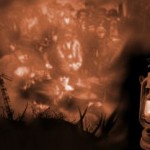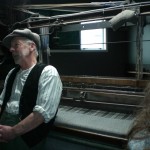Genealogy Occupational Records
Finding Your Ancestors in Trades Union Records
August 23, 2012 by ramona
Filed under Articles, Genealogy Occupational Records, Genealogy Records 101, Latest News
 One of the very first things you learn as a genealogy beginner is to look in birth, marriage, death and census records for clues to uncovering your ancestral past. Then you learn about land records, sasines and other records associated with genealogy.
One of the very first things you learn as a genealogy beginner is to look in birth, marriage, death and census records for clues to uncovering your ancestral past. Then you learn about land records, sasines and other records associated with genealogy.
One often overlooked source of information for your family tree are trades union records.
The trade your ancestor worked in may hold valuable information. For example, the record of a tradesman can help you find an ancestor who has disappeared from the record or help you fill in the blanks of, where, when and why they changed locations between census. Quite often trades ran in families and you may even find generations of records if you are lucky.
For family history hunters with ancestors from the UK one record source you may want to track down is The Modern Records Centre. This unique resource is not genealogy specific nevertheless; they do have a number of collections that are genealogy gold.
The Modern Records Centre collection includes information on UK trade union employers that work as guide to help find specific records for individuals.
Some of the trades they cover include:
Blacksmiths, Forge & Smithy Workers
The Scottish United Operative Blacksmiths’ Protective and Friendly Society was recognized on 24 August 1857: records held in this collection are general registration books, 1857-1924. These records hold information on individuals however to find an individual you will need either their membership number or the year they joined the union. Another great resource in this collection is the monthly, quarterly and annual/financial reports (1858-1961). This set of records includes lists of deceased members and their spouses.
Joiners
The Amalgamated Society of Carpenters and Joiners/Amalgamated Society of Woodworkers hold membership records in three series. To find information on individual members you will need to know the branch to which your ancestor belonged.
· What the collection contains and what you can hope to find:
· Admission books (1895-1931): Your ancestors name, age when admitted, number of years in the trade, the date he was admitted, his marital status, if he recieved funeral benefits, excluded members and if he was transferred between branches.
· Registration books (1901-1921): Some of the information included are name, age when admitted, date admitted, marital status, date of marriage and name of branch, any benefits received and date of death or exclusion from the union.
· Reference books (1901-1921): The reference books contain lists of members in 1901, 1911 and 1921 that had transferred in another place.
· Annual reports (1920-1971): The most interesting thing about the Annual reports is that they contain obituaries of several members.
Railwaymen
There are several unions for railwaymen with records dating from so it will be very helpful to know exactly which union your ancestor was a member of. In spite of this, the collection has some of the richest genealogical holdings.
Annual reports of the Orphans Fund (1889, 1893-1912):
These records hold the details of payments made to the children of deceased members. To research the collection you will need to know the year(s) benefit were granted.
Record of accidents, inquests, Board of Trade enquiries, and legal cases (1901-1907):
This collection is indexed by branch and arranged in chronological order. It contains information on accidents and inquests and can tell you the date ,place and nature of an accident along with whether or not any compensation was paid or the outcome of an inquest. Researchers will need to know an approximate date of accident as well as the member’s branch.
The Modern Records Centre also holds union records for Boilermakers, Bookbinders, Bricklayers, Gilders, Ironfounders, Papermakers, Printing Workers, Quarrymen, Seamen, Shipwrights & Shipbuilders, Stonemasons and Telegraphists among many others.
Before you head off to research your ancestors trades take advantage of genealogybeginner.com’s 30-day free trial membership and download your Family Tree Charts and Research Tracking Forms today.
The Handloom Weavers of Perth website
September 11, 2008 by Chris
Filed under Blank Family Tree, Genealogy Occupational Records, Genealogy Records 101
 Genealogy is an ever fascinating subject and you may be surprised at just how many research approaches are available to you. We are all informed about the primary concepts of – start with you and hunt the down those birth, marriage and death records. Very soon after that, avid researchers are busily tracking down the most likely census returns. However, were you aware that you may be missing out on another incredibly valuable but often overlooked resource in researching your ancestor’s; researching their trade?
Genealogy is an ever fascinating subject and you may be surprised at just how many research approaches are available to you. We are all informed about the primary concepts of – start with you and hunt the down those birth, marriage and death records. Very soon after that, avid researchers are busily tracking down the most likely census returns. However, were you aware that you may be missing out on another incredibly valuable but often overlooked resource in researching your ancestor’s; researching their trade?
On many of the above mentioned records you will likely find the profession or trade of your past generations listed along with all of the vital statistics data. From this point on you can begin your journey down an amazing path of discovery, which will not only provide you with more factual information but more importantly bring you closer to knowing exactly who your ancestors were as individuals.
In this wonderful article on “The Handloom Weavers of Perth” from Scotland’s Greatest Story you will get a glimpse of the significance of this type of research and the value it provides not only to your genealogy research but to your family history as well.
After reading this, if you are still thirsty for more information on the subject, follow this link to the The Handloom Weavers of Perth web site.
I hope you enjoy this as much as I did.
The website is available at www.perthweavers.bravehost.com and will be extended further next year, once I get a chance to continue it!
Hopefully it might be of use to some of those with Perth ancestry!
Chris
www.ScotlandsGreatestStory.co.uk
Scotland’s Greatest Story
Professional family history research & genealogical problem solving
…
Where to Next?
…
